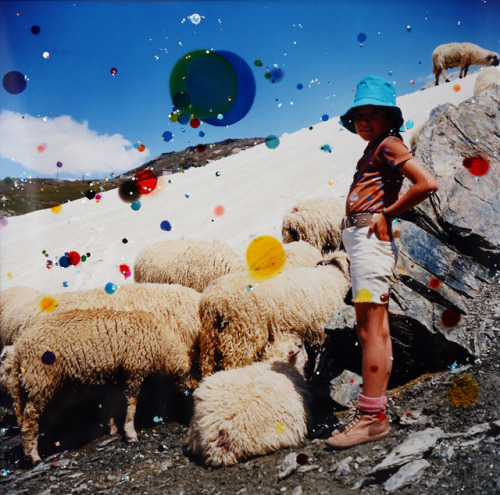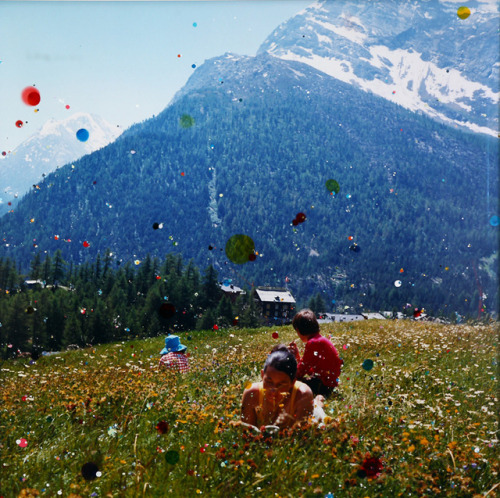Dikeou Superstars: Sebastiaan Bremer

Schöner Götterfunken VII, ‘Joyful As His Suns Are Flying’ (Froh, Wie Seine Sonnen Fliegen), 2011
There is the Welsh word “hiraeth,” and the Portuguese “saudade”—terms that have no direct translation in English but carry deep meaning. They get at an intangible concept of wistful longing—or nostalgia—for one’s home, homeland, or a place, which exists in the past, that one has never been to, or cannot return to, or that never was, but one feels a homesickness for. While these enigmatic words have no equivalent in other languages, and are specific to a region and a distinct cultural identity, they encapsulate something that is ubiquitous in the human experience. The Dikeou Collection’s unique hand-painted c-print photographs by Dutch artist, Sebastiaan Bremer, Large Schoener Goetterfunken, 2010-11, feel like a universal, and visual, translation of that yearning.
Sun-soaked snapshots of a family in the Swiss Alps saturated with verdant greens and dappled with translucent and opaque spots of color, Bremer’s Schoener Goetterfunken images ‘Joyful As His Suns Are Flying’ (Froh, Wie Seine Sonnen Fliegen), and ‘At Nature’s Bosoms’ (An Den Bruesten Der Natur), capture a family vacation that he, himself, did not get to go on. The painted dots on the image surface are what Bremer calls a “poetic braille,” which he integrates into the c-print photographs. As they exist in the documented landscape, the splashes of paint evoke the white floating specks which momentarily mark one’s vision after directly staring at the sun, or the flash of a camera. That evocation imparts an instantaneity of experience. Cutting through the yellowing film of time, the viewer is brought into the atmosphere of a place of the past—which no longer exists, but feels at the same time so tangibly real.
The application of paint to pictures is multivalent in both its process and its meaning. Bremer applied the pigment to the found snapshots in multiple layers. The more lucent drops of paint were applied earlier in the process of image-making, and the final layer of stippled pigment, like braille, is opaque and three-dimensional. By tediously painting on the images in a series of layers, Bremer negotiates these landscapes of the past, inserting himself into memories that he does not have, but perhaps wants to possess. The paint, then, is his “hand” in the work, what he has added to the visual experience of images which were, in a sense, readymade.

Schöner Götterfunken XIV, ‘At Nature’s Bosoms’ (An Den Bruesten Der Natur), 2010
The effect is two-fold, and deals with time. While the hand-painted photographic imagery gives one the almost impressionist sense of spontaneity—a fleeting moment captured—the spots on the images simultaneously resemble the aggregate coat of dust one encounters while thumbing through a box of old family photos. In the context of such a viewing experience, the dust becomes a part of the material fabric of the image, and adds to its meaning and significance. Bremer’s painted invocation of that dusty veneer implies the accumulation of time. In this way, the paint particles further distance one from the place and time of the snapshot. The viewer is at once drawn into an experience and pushed out by the acknowledgment of time, and, thus, suspended in an interior struggle of longing for a place they have never been to, and the feeling that they once were there.
Along with significant photographic works by Dan Asher, Rainer Ganahl, Lee Stoetzel, Janine Gordon, and Lisa Kereszi, Sebastiaan Bremer’s works are on permanent view at the Dikeou Collection.
-Rebecca Manning
